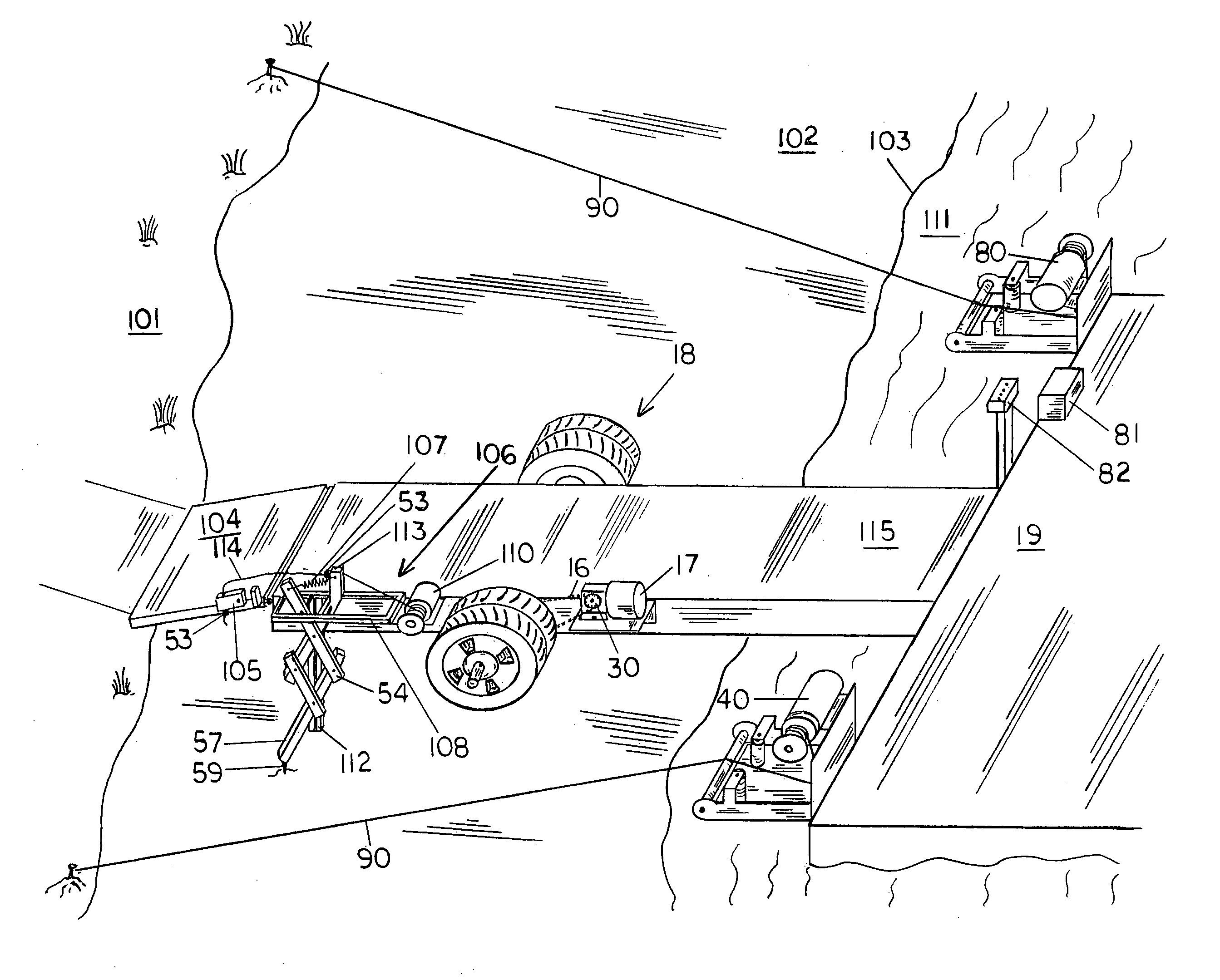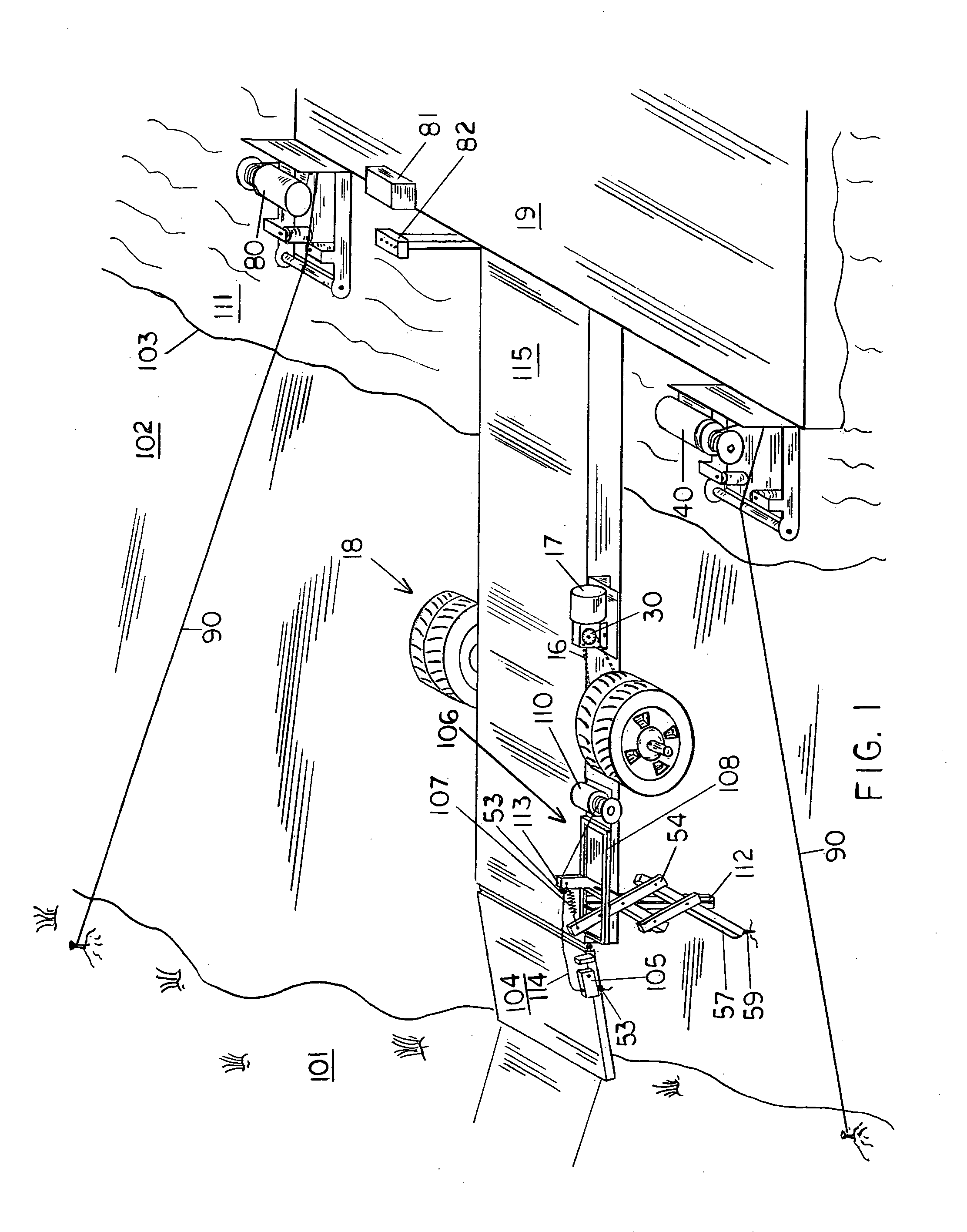Floating dock mover
a dock mover and floating technology, applied in the direction of special-purpose vessels, hoisting equipment, vessel construction, etc., can solve the problems of no access to the dock, inaccessible and therefore unusable, and time-consuming
- Summary
- Abstract
- Description
- Claims
- Application Information
AI Technical Summary
Problems solved by technology
Method used
Image
Examples
embodiment invention
Operation of Preferred-Embodiment Invention
[0060]In operation, the preferred embodiment invention will function as follows: To relocate the dock mover of this invention toward the main body of water, operator control center 82 shown in FIG. 1 is accessed by an operator and switch 93B shown in FIG. 10 is activated in a back position thereby causing FIG. 1 anchor / ramp winch 110 to take-in winch cable 114, thereby causing pivot arm 105 to rise and stop rotation against stop 109 shown in FIG. 9. Continued motion of anchor / ramp winch 110 will cause FIG. 1 walkway ramp 104 to rise.
[0061]FIG. 1 and FIG. 8 reflects that with the same continued anchor / ramp winch 110 rotation as noted previously, primary winch anchor arm 113 will move toward anchor / ramp winch 110. As primary winch anchor arm 113 moves closer to anchor / ramp winch 110, guide bolts and nuts 56 shown in FIG. 8 slide upward within vertical guide 112, thereby causing anchor cross arm 54 to move away from primary winch anchor arm 11...
PUM
 Login to view more
Login to view more Abstract
Description
Claims
Application Information
 Login to view more
Login to view more - R&D Engineer
- R&D Manager
- IP Professional
- Industry Leading Data Capabilities
- Powerful AI technology
- Patent DNA Extraction
Browse by: Latest US Patents, China's latest patents, Technical Efficacy Thesaurus, Application Domain, Technology Topic.
© 2024 PatSnap. All rights reserved.Legal|Privacy policy|Modern Slavery Act Transparency Statement|Sitemap



